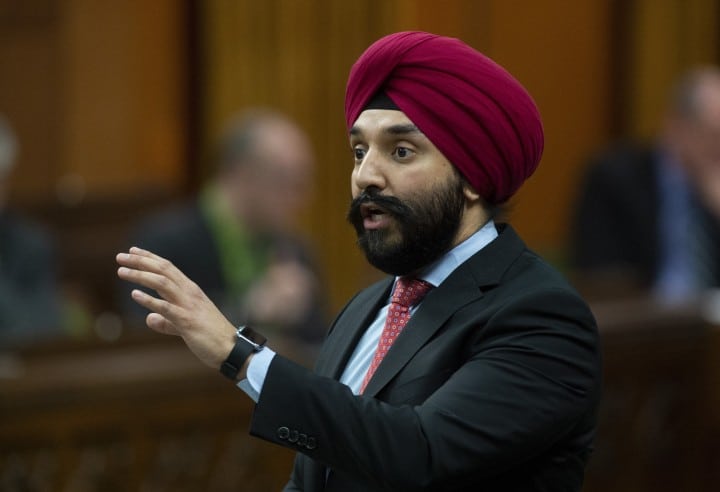Federal government gives Big 3 telcos two years to bring down wireless prices
Published March 5, 2020 at 11:06 pm

TORONTO — The federal government is giving Canada’s three largest wireless carriers two years to bring prices down by 25 per cent and is setting aside spectrum in an upcoming auction in order to further boost competition.
Industry Minister Navdeep Bains said Thursday that the incumbents Bell, Telus and Rogers must reduce prices for their wireless plans in the two- to six-gigabyte range by 25 per cent from where they were at the start of this year.
“Prices have come down in the top tier and bottom tier plans, but in the mid-tier, between the two and six gigabyte space, prices have not come down significantly, and we’re going to follow through on a campaign commitment to reduce prices,” said Bains.
The reductions would see two gigabyte plans fall to $37.50 from $50, while six gigabyte plans would go to $45 from $60.
If incumbents don’t meet the targets, the government could take action on spectrum allocation or change its policy on whether smaller carriers could use the infrastructure of incumbents, said Bains.
The government will also start rolling out quarterly reports to track the progress of the big telecoms in reaching the targets, with the first out in April.
The commitment comes as a 2019 pricing report showed regional carriers had plans priced substantially lower than the big three carriers, though the wireless space in Canada has shifted substantially since much of the data was gathered last May.
One of the biggest changes is the shift by the big three to 10 gigabyte wireless plans with no overage penalties, which has helped lead to significant price reductions by the incumbents in numerous categories.
The report noted that between May and September last year, incumbent prices dropped by 30 per cent for two gigabyte plans and 24 per cent for five gigabyte plans.
Prices are already down by more than 25 per cent from the levels used by the Liberals in their campaign platform last fall, noted industry analyst Mark Goldberg.
“I think there was a missed opportunity for the government to declare victory, that prices have fallen by more than the 25 per cent that were in the Liberals’ campaign material.”
He said that while it’s not yet clear what kind of pressure the further reduction will put on companies, the policy puts pressure on infrastructure spending for the big three.
Bains, however, maintains that prices are still too high in the two- to six-gigabyte range that makes up about 40 per cent of subscriptions.
“Many Canadians fall within this range, and this is the area where we need to see prices going down,” he said.
He says that for the upcoming auction of 3500 MHz band wireless spectrum, the government will set aside 25 per cent of the 200 MHz on offer for smaller and regional competitors, where space allows, to further foster competition.
Big telcos have said these allocations for regional carriers drive up their costs, which they have to pass on to customers, but Bains said the set-aside was important.
“We want to make sure we create a level playing field for the regional players, and we believe this set-aside enables them to deploy 5G in a manner that allows them to compete in those key jurisdictions.”
The auction for the spectrum, which is capable of running 5G wireless technology that is up to 100 times faster than 4G systems, is scheduled for Dec. 15 this year.
This report by The Canadian Press was first published March 5, 2020.
INsauga's Editorial Standards and Policies

